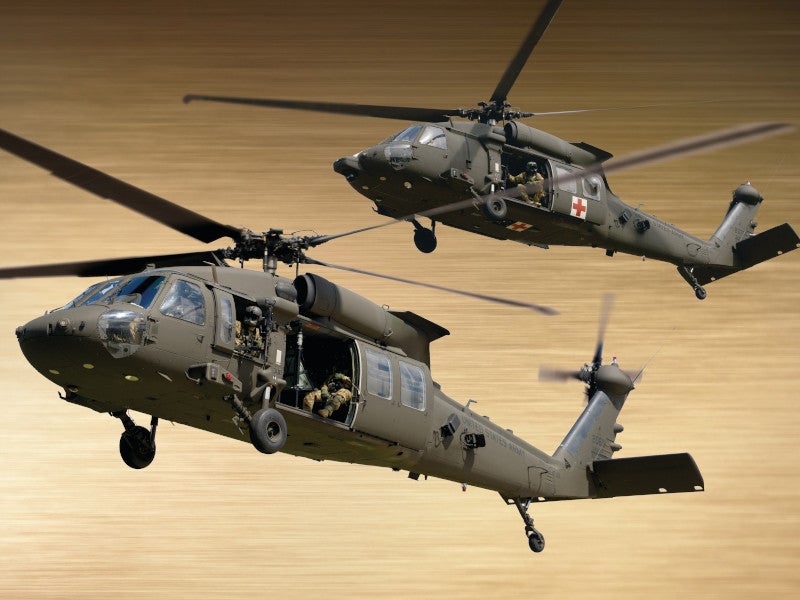UH 60 Black Hawk: From Concept to Modern Day Applications
The Influence of Sustainable Practices on the Future of Aircraft Operations and Emissions Decrease
As the aeronautics industry deals with increasing scrutiny over its environmental impact, the fostering of lasting practices arises as a vital pathway toward future airplane procedures and emissions reduction. Developments in lasting aviation gas and advancements in crossbreed propulsion modern technologies stand at the forefront of this improvement, encouraging significant reductions in greenhouse gas emissions.

Summary of Sustainable Practices
Sustainable methods in airplane operations include a variety of methods targeted at decreasing environmental impact while maintaining functional efficiency. These techniques are essential in the aviation sector's dedication to lessening its carbon impact and sticking to worldwide environmental standards. Key efforts consist of maximizing trip courses to decrease fuel consumption, enhancing maintenance methods to make certain airplane run at peak performance, and applying innovative innovations such as winglets and lightweight materials that improve the rules of aerodynamics.

Involving and training personnel on sustainability techniques also play a crucial role, cultivating a society of environmental obligation within companies. On the whole, the integration of these sustainable methods not just helps in reducing discharges but additionally boosts the long-term practicality of the air travel market, ensuring it satisfies the needs of both clients and governing bodies while adding to international sustainability goals.
Ingenious Fuel Alternatives
Various ingenious fuel choices are becoming pivotal services to decrease the air travel industry's dependence on traditional fossil fuels. Among these alternatives, Sustainable Air travel Gas (SAFs) have acquired considerable interest due to their prospective to reduce lifecycle greenhouse gas discharges by as much as 80% contrasted to traditional jet gas. SAFs are acquired from numerous feedstocks, consisting of waste oils, agricultural residues, and also algae, making them a flexible choice for the market.
One more promising option is hydrogen gas, which, when made use of in fuel cells, creates only water vapor as a byproduct. This zero-emission potential presents a substantial chance for decarbonizing flight operations, particularly for short-haul trips and regional airplane. Additionally, electrical propulsion systems are being checked out, leveraging battery innovation to power aircraft. While existing battery ability limitations range and payload, ongoing improvements might quickly make electrical trips feasible for specific applications - uh 60.
Finally, biofuels acquired from biomass are being explored, providing a renewable alternative that can be blended with standard gas. Jointly, these innovative gas options stand for a vital action towards attaining a sustainable aviation ecological community, aligning with worldwide discharges reduction targets and improving the industry's environmental stewardship.
Technical Advancements in Aeronautics

How can technological developments improve the future of aviation? Technologies such as electrical and hybrid propulsion systems are at the leading edge, promising substantial decreases in gas intake and greenhouse gas emissions.
Moreover, the implementation of sophisticated products, such as lightweight compounds, adds to improved the rules of aerodynamics and fuel efficiency. Making use of expert system and equipment knowing in trip procedures optimizes course planning and minimizes fuel burn by making it possible for real-time adjustments based upon climate and web traffic you can look here conditions. Furthermore, the growth of independent and from another location piloted aircraft systems stands to revolutionize freight and traveler transport, possibly raising effectiveness while decreasing human error.
In addition, sustainable air travel innovations, including advanced air web traffic monitoring systems, can improve operations and decrease congestion, resulting in lower exhausts during trip. These developments collectively stand for a paradigm shift in aviation, guaranteeing a future where sustainability and functional effectiveness are intertwined, thus supporting the market's dedication to decreasing its environmental impact.

Regulatory Framework and Compliance
Taking into account the growing focus on environmental stewardship within the air travel field, the regulative structure governing airplane procedures is advancing to advertise sustainable techniques. Regulative bodies, such as the International Civil Aeronautics Organization (ICAO) and various nationwide air travel authorities, are introducing strict standards intended at lowering exhausts and boosting operational efficiency.
These regulations frequently include the fostering of Sustainable Aeronautics Fuel (SAF), which has actually been acknowledged as a key element in achieving reduced carbon footprints. Compliance with these laws requires airlines to carry out innovative modern technologies and operational methods, such as maximized trip paths and boosted air website traffic monitoring, to decrease fuel intake.
In addition, the enforcement of discharges trading plans and carbon balancing out campaigns is becoming significantly widespread, compelling airline companies to keep track of and report their emissions properly. Non-compliance can cause considerable fines, hence pushing drivers to prioritize sustainability in their company versions.
Eventually, the evolving regulative landscape not only drives technology and financial investment in green innovations but additionally fosters a society of responsibility within the air travel sector. As these structures proceed to develop, the concentrate on lasting techniques will certainly be integral to accomplishing the sector's long-term ecological goals.
Future Trends in Airplane Workflow
As the air travel market adapts to a progressively strict regulative setting, future fads in aircraft operations are readied to concentrate on cutting-edge remedies that further boost sustainability and performance - uh 60. Secret developments will likely include the fostering of innovative air website traffic administration click for more info systems, which use real-time data and expert system to enhance flight paths, minimizing gas consumption and exhausts
Another significant fad is the increased combination of sustainable aeronautics gas (SAFs) These options to traditional jet gas, derived from eco-friendly sources, can substantially reduce lifecycle greenhouse gas exhausts. The industry's commitment to SAFs will likely accelerate as airlines work together with fuel producers to make certain schedule and cost-effectiveness.
In addition, the push in the direction of electrification and hybrid propulsion systems is obtaining momentum. Emerging airplane designs will certainly incorporate these modern technologies, providing quieter and much more effective procedures, specifically for short-haul flights.
Final Thought
Finally, the combination of lasting techniques in airplane go to my site procedures holds considerable potential for exhausts reduction and improved efficiency. The adoption of lasting air travel gas, paired with improvements in electrical and hybrid propulsion systems, is vital for decreasing lifecycle greenhouse gas emissions. Optimizing flight courses and embracing cutting-edge technologies contribute to a quieter and extra eco friendly aviation sector. Jointly, these efforts straighten with global sustainability goals and lead the way for a greener future in aviation.
Developments in lasting air travel gas and developments in hybrid propulsion technologies stand at the leading edge of this change, encouraging significant decreases in greenhouse gas discharges.Various ingenious fuel choices are arising as crucial services to reduce the aeronautics industry's dependence on traditional fossil gas - uh 60. Amongst these alternatives, Sustainable Aeronautics Fuels (SAFs) have gained considerable attention due to their prospective to lower lifecycle greenhouse gas discharges by up to 80% compared to traditional jet fuels.One more considerable trend is the raised assimilation of lasting aeronautics fuels (SAFs) The adoption of lasting aviation fuels, combined with developments in hybrid and electrical propulsion systems, is necessary for reducing lifecycle greenhouse gas exhausts